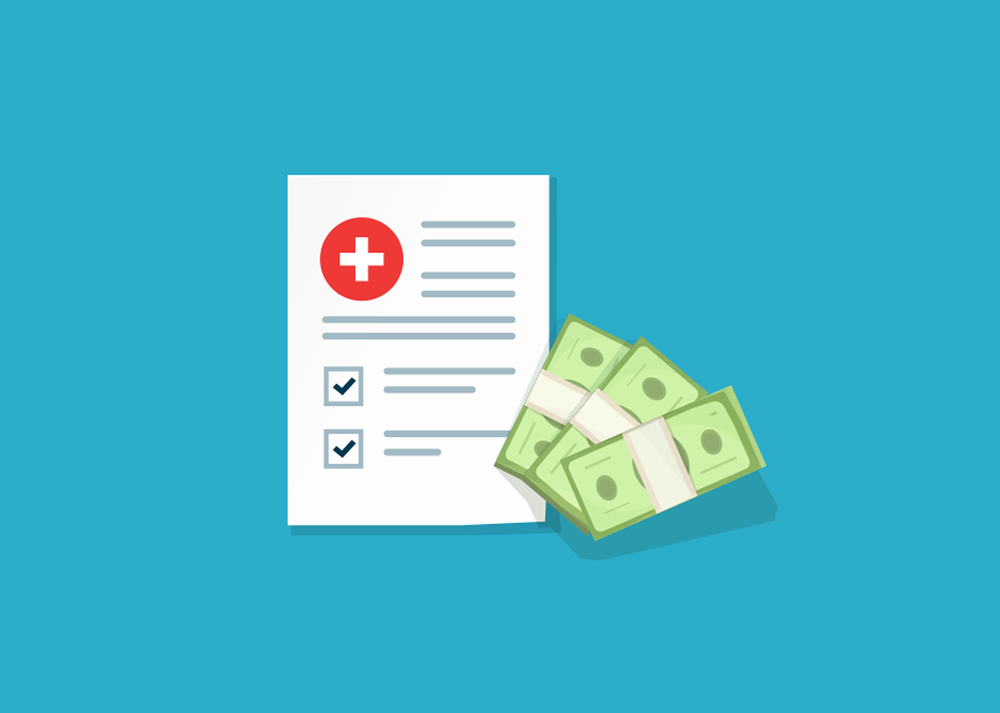Medicare Costs
The Annual Enrollment Period usually coincides with updated Medicare pricing for the year ahead. Learn what to expect with Medicare costs.
Ready to compare plans? Talk to a licensed insurance agent today
Every fall, updated pricing information for Medicare Part A and Part B coverage is announced. Usually, this happens just before the Annual Enrollment Period, which begins Oct. 15 and runs through Dec. 7.
While your actual Medicare costs change because of specific coverage - for instance, Medicare Advantage and Medicare Supplement costs vary by plan and provider - the pricing information for Original Medicare can help you better understand your cost breakdowns and what to expect for the year ahead.
Read on for more information on updated costs associated with Medicare.
2024 Update: This page has been updated to reflect Medicare pricing for the 2024 calendar year. You can read the full release here.

Medicare Cost Terms To Know
Before diving into information regarding Medicare costs, it's important to understand the terms surrounding this important aspect of health care coverage. Below is a list of common cost-related terms along with concise definitions.
This is the amount you pay for your health insurance very month. For Medicare, there are premiums associated with Part A, Part B, Part C (Medicare Advantage), Part D (Drug Coverage) and Medicare Supplement plans. For most people, the Part A premium is $0 if you or a spouse paid Medicare taxes long enough while working, or if you get Medicare earlier than age 65.
Medicare Part A (Hospital Insurance) Costs
Medicare Part A covers inpatient hospital stays, skilled nursing facility care, hospice care and some home health care.
Most people do not usually pay a premium for Part A. This is true if you or your spouse paid Medicare taxes while working for a certain amount of time. If you were eligible to enroll in Medicare before you turn 65, this is also true.
If you have to buy Part A because you don't qualify for a premium-free Part A plan, you will have to pay a premium.
In 2024, the standard Part A premium is $505 if you paid Medicare taxes for less than 30 quarters. That drops to $278 if you paid Medicare taxes for 30-39 quarters.
| Part A Costs | What You Pay in 2024 |
|---|---|
| Premium | $0 for most people; if you don't qualify for premium-free Part A, you may be able to buy it. Your premium would be $278 or $505 each month depending on how long you/your spouse paid Medicare taxes |
| Deductible | $1,632 for each inpatient hospital benefit period before Original Medicare starts to pay |
| In-patient stay | Days 1-60: $0 after you pay your Part A deductible
Days 61-90: $408 copayment each day Days 91-150: $816 copayment each day while using your 60 lifetime reserve days After Day 150: You pay all costs |
| Skilled nursing facility stay | Days 1-20: $0 copayment
Days 21-100: $204 copayment each day Days 101 and beyond: You pay all costs |
| Home health care | $0 for covered home health services. 20% of the Medicare-approved cost for durable medical equipment. |
| Hospice care | $0 for covered hospice care services |
Medicare Part B (Medical Coverage) Costs
Medicare Part B covers certain doctors' services, outpatient care, medical supplies and preventative services. Everyone pays a monthly premium for Part B.
The standard Part B premium amount for 2024 is $174.40. However, if your modified gross income as reported on your IRS tax return from 2 years ago is above a certain amount, you'll additionally pay an Income Related Monthly Adjustment Amount (IRMAA). Both the standard premium and the IRMAA pricing changes each year.
You'll have to pay the Part B premium each month even if you don't get any covered Part B services. If you don't sign up for Part B when you're first eligibile for Medicare, you might have to pay a monthly penalty for as long as you have Part B. This penalty increases the longer you wait to sign up
| Part B Costs | What You Pay in 2024 |
|---|---|
| Premium | $174.70 each month, but may be higher based on your income. This does not include any potential penalty if you don't sign up for Medicare Part B when you're first eligible. |
| Deductible | $240 before Original Medicare starts to pay. |
| General costs for services (Coinsurance) | 20% (usually) for each Medicare-covered service after you've paid your deductible (and your doctor accepts assignments). |
| Clinical laboratory services | $0 for covered services |
| Home health care | $0 for covered home health services. 20% of the Medicare-approved cost for durable medical equipment. |
| Inpatient hospital care | 20% of the Medicare-approved amount |
| Outpatient mental health care | $0 for yearly depression screening // 20% of the Medicare-approved amount for doctor or health-care provider visits for diagnosis or treatment. Services rendered in a hospital outpatient clinic or department may result in an additional amount paid to the hospital. |
| Partial hospitalization mental health care | After you meet the Part B deductible, it is 20% of the Medicare-approved amount for each covered service. You may have to pay coinsurance for each day of partial hospitalization. |
| Outpatient hospital care | Usually 20% of the Medicare-approved amount for covered services. |
As stated above, the IRMAA thresholds also change each year. Here is a table to help determine if you'll pay a higher Part B premium becomes of income level.
| Less than or equal to $103,000 | Less than or equal to $206,000 | $174.70 |
| Greater than $103,000 and less than or equal to $129,000 | Greater than $206,000 and less than or equal to $258,000 | $244.60 |
| Greater than $129,000 and less than or equal to $161,000 | Greater than $258,000 and less than or equal to $322,000 | $349.40 |
| Greater than $161,000 and less than or equal to $193,000 | Greater than $322,000 and less than or equal to $386,000 | $454.20 |
| Greater than $193,000 and less than $500,000 | Greater than $386,000 and less than $750,000 | $559.00 |
| Greater than or equal to $500,000 | Greater than or equal to $750,000 | $594.00 |
| Less than or equal to $103,000 | $174.70 |
| Greater than $103,000 and less than $397,000 | $559.00 |
| Greater than or equal to $397,000 | $594.00 |
Medicare Part D (Drug Coverage) Costs
Medicare Part D, or prescription drug coverage, are separate plans purchased through insurance companies. Because of this, costs associated with premiums, deductibles, copayments and coinsurance will vary by plan.
However, both your income level and a potential penalty could increase your Part D plan premium. You can avoid a penalty by joining a Medicare drug plan when you first get Part A and/or Part B, and by not going 63 days or more without creditable drug coverage.
See the table below for income-related adjustments to your Part D plan premium.
| Less than or equal to $103,000 | Less than or equal to $206,000 | Your Plan Premium |
| Greater than $103,000 and less than or equal to $129,000 | Greater than $206,000 and less than or equal to $258,000 | $12.90 + Your Plan Premium |
| Greater than $129,000 and less than or equal to $161,000 | Greater than $258,000 and less than or equal to $322,000 | $33.30 + Your Plan Premium |
| Greater than $161,000 and less than or equal to $193,000 | Greater than $322,000 and less than or equal to $386,000 | $53.80 + Your Plan Premium |
| Greater than $193,000 and less than $500,000 | Greater than $386,000 and less than $750,000 | $74.20 + Your Plan Premium |
| $500,000 or above | $750,000 or above | $81.00 + Your Plan Premium |
| Less than or equal to $103,000 | Your Plan Premium |
| Greater than $103,000 and less than $397,000 | $74.20 + Your Plan Premium |
| Greater than or equal to $397,000 | $81.00 + Your Plan Premium |
Medicare Supplement (Medigap) Costs
It's important to understand the costs associated with Medicare Part A and Part B, as well as prescription drug plans, because you can only buy a Medicare Supplement plan if you have Original Medicare. Additionally, Medigap plans do not include prescription drug coverage, so you need to either have creditable coverage or purchase a Part D plan separately.
If you enroll in a Medigap plan, you will have to pay the monthly Medicare Part B premium and a premium to your Medigap insurance company. Medigap premiums will vary based on insurance provider, but that cost is the only difference when you compare the same letter plans between providers. This is because insurance companies can only sell standardized Medigap policy - if you compare Medigap Plan G between a variety of providers, for instance, the coverage will be exactly the same with generally only the premium changing.
This is why it's important to compare plans to ensure you're finding a policy that provides you with the coverage you want at a price that fits your budget.

